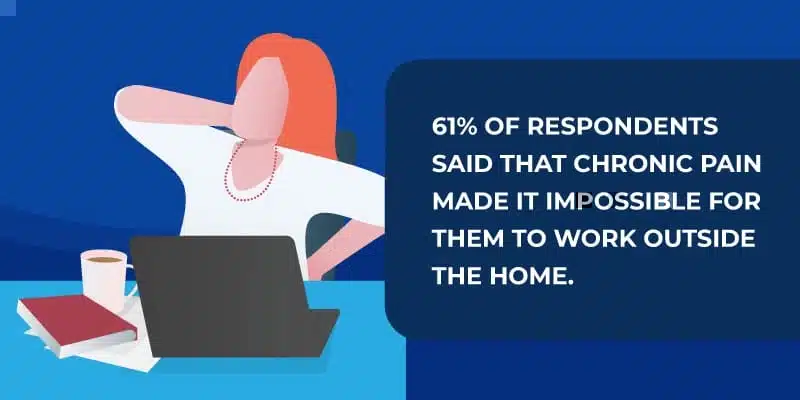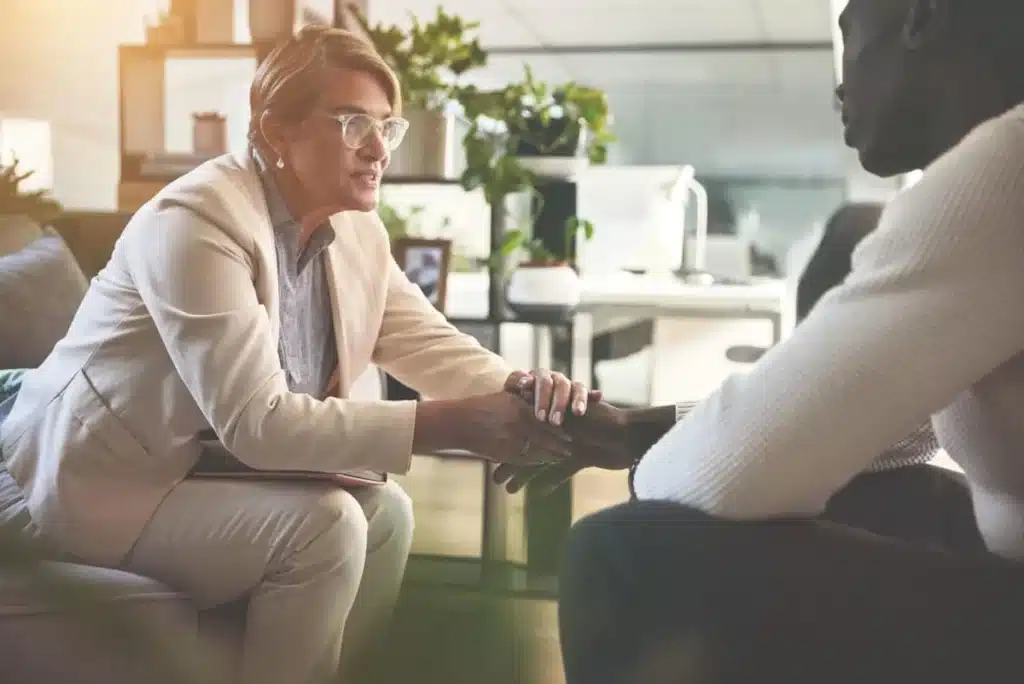

Symptoms of Chronic Pain Syndrome
Chronic pain symptoms can look different from person to person. Read on to learn more about your symptoms and how to find relief.
The information presented on this page is an overview of the average evaluation of chronic pain and is offered here as a resource. At J. Flowers Health Institute, our evaluations and treatment plans are customized and tailored to each individual’s needs. We specialize in providing a comprehensive team approach to your care. Our evaluations may include neuropsychological and medical testing, brain mapping, and a chronic pain assessment for help diagnosing your symptoms to provide the holistic care you deserve.
If you would like to learn more about J. Flowers Health Institute, please do not hesitate to reach out.
Table of Contents
Reach Out to Learn More
Chronic Pain Management at J. Flowers Health Institute
Experience empathetic and proficient care at J. Flowers Health Institute. Led by Dr. James S. Flowers, our team of board-certified professionals is deeply committed to understanding and managing your chronic pain symptoms.

What Is Chronic Pain Syndrome?
Chronic pain syndrome is a health condition where a person experiences persistent pain that lasts for more than three months.
Chronic pain syndrome is both a medical and mental health condition. The physical toll chronic pain has on the body can quickly become mentally and emotionally draining to deal with on a daily basis. An estimated 25.3 million people in the United States experience chronic pain symptoms.1
What Does Chronic Pain Feel Like?
- Constant throbbing in a specific part of the body
- A stinging sensation that travels throughout various parts of the body
- A dull ache or a burning sensation
- Sharp or shooting pain
Chronic pain can be intermittent, meaning it comes and goes. However, it can also be constant. It can occur in nearly any part of the body, making it a widespread condition.
Physical and Emotional Symptoms of Chronic Pain
Muscle Stiffness and Weakness
Sensory Changes
Fatigue and Sleep Disturbances
Reduced Range of Motion
Headaches and Migraines
Anxiety
Depression
Living with persistent pain can make you feel hopeless, leading to a loss of interest in activities you once enjoyed and a persistent feeling of sadness. Some statistics suggest that almost 61% of people with chronic pain also live with depression.3
Behavioral Changes Stemming From Depression
Irritability and Mood Swings
Cognitive Impairment

Impact of Chronic Pain Symptoms
Isolation
Impact on Work and Productivity
Substance Use Disorder
Drugs, alcohol, and other substances are often used as a way to cope with the constant pain or emotional distress associated with it. While these substances might provide short-term relief, they can lead to dependence and serious health issues in the long run.
What is Substance Use Disorder?
Causes of Chronic Pain Syndrome
Back Pain
Chronic pain symptoms can often be traced back to back pain. Back pain, particularly in the lower region, is typically a result of strain from lifting heavy objects or repetitive movement.
Fibromyalgia
Fibromyalgia is another cause of chronic pain symptoms. It’s a disorder that causes muscle pain and fatigue. People with fibromyalgia have “tender points” on the body.
What is Fibromyalgia?
Diabetic Neuropathy
Additional Sources of Chronic Pain Symptoms
Diagnosis of Chronic Pain Syndrome
Medical History and Physical Examination
Diagnostic Criteria
Imaging and Lab Tests

Treatment of Chronic Pain Syndrome
Many treatment programs for chronic pain syndrome include medications, physical therapy, and psychological therapy.
Medications
Physical Therapy
Psychological Therapy
Alternative Treatments for Chronic Pain
In addition to medication and therapy, your doctor may recommend alternative treatment options for chronic pain management. Alternative treatment opportunities include:
Hypnotherapy
Meditation and Yoga
Meditation and yoga encourage deep breathing and relaxation, soothing the muscles. They may also improve mood by reducing the depression and anxiety that accompany chronic pain.
Acupuncture
Acupuncture is a traditional Chinese medical practice that involves inserting very thin needles into specific points on your body. The idea is to promote self-healing by stimulating specific anatomic sites, commonly referred to as acupuncture points.

Find Help for Chronic Pain Symptoms at J. Flowers Health Institute
When you suffer from chronic pain, it can feel like the pain is taking over. The emotional stress added to living with chronic pain can make it difficult to work, care for family, and achieve daily goals. Fortunately, chronic pain is treatable.
What Do We Offer?
Our diagnostic evaluation may include:
- Comprehensive medical evaluation
- Chronic pain evaluation
- Psychiatric evaluation
- Lifestyle assessment
- Specialty physicians consult
- Fitness and nutritional evaluation
- Psychological diagnostic testing
- Neuropsychological testing and brain mapping
- Nutritional assessment and guidance
- Psychosocial and trauma assessment
- Medication evaluation
- Substance use disorder assessment
- Spiritual assessment and counsel
- Comprehensive report and action plan
Chronic Pain Symptoms and Conditions We Can Help With
- Fibromyalgia
- Complex Regional Pain Syndrome (CRPS)
- Sciatica
- Back pain
- Arthritis pain
- Neuropathic pain
- Headaches and migraines
We Are Here To Help
At J. Flowers Health Institute, we believe in a holistic approach to health and wellness. This means looking beyond your symptoms to understand and treat the root cause of your pain.
If you are struggling with chronic pain symptoms and looking for a comprehensive approach to diagnosis and treatment, reach out to J. Flowers Health Institute today. Let us guide you on your path to a pain-free life.
Resources
- https://www.nccih.nih.gov/news/press-releases/nih-analysis-shows-americans-are-in-pain
- https://www.ncbi.nlm.nih.gov/pmc/articles/PMC4046588/
- https://www.ncbi.nlm.nih.gov/pmc/articles/PMC4912238/
- https://www.ncbi.nlm.nih.gov/pmc/articles/PMC4731442/
- https://www.ncbi.nlm.nih.gov/books/NBK538173/
- https://www.cdc.gov/arthritis/basics/fibromyalgia.htm
- https://gut.bmj.com/content/52/11/1623.full
- https://www.ncbi.nlm.nih.gov/pmc/articles/PMC4036643/
- https://gut.bmj.com/content/52/11/1623.full









